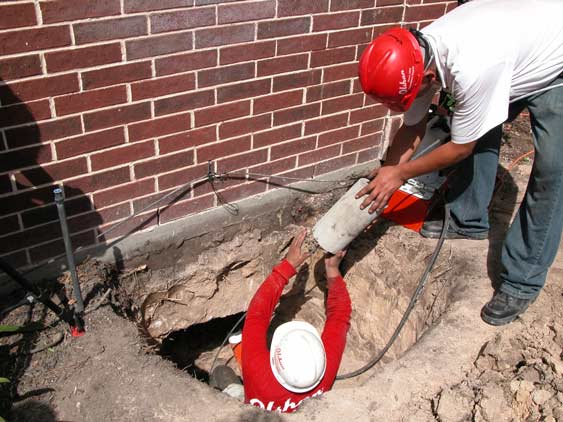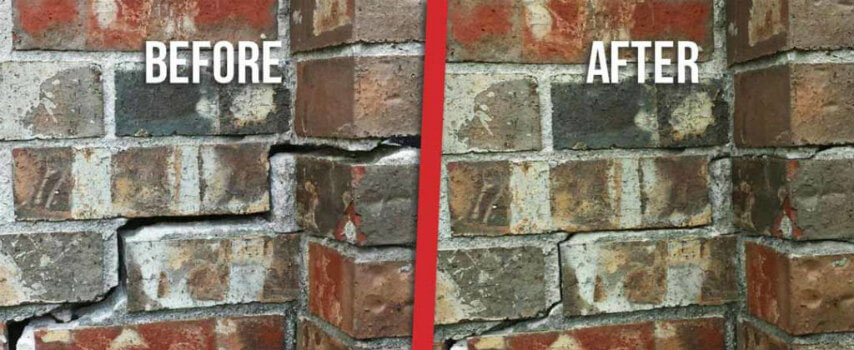Browsing Your Choices for Foundation Repair Oklahoma City: A Homeowner's Manual
Discovering Different Approaches of Structure Repair Work for Numerous Soil Types
Structure fixing is a crucial element of keeping structural integrity, particularly when taking into consideration the diverse difficulties presented by various soil types. The complexity of soil habits under differing conditions necessitates a tailored method to repair, making sure ideal services such as helical piers for unstable dirts or chemical grouts for cohesive layers.
Understanding Dirt Kinds
Soil kinds play a critical role in the stability and durability of building foundations, making it important for house owners and building and construction specialists to understand their characteristics and behavior. The communication in between dirt and foundation can figure out the architectural honesty of a structure. There are numerous dirt types, each with distinct physical buildings that influence just how foundations are developed and preserved.
Granular dirts, such as sand and gravel, provide excellent drainage and are often taken into consideration steady. In comparison, cohesive soils like clays and silts exhibit different behaviors.
Rocky dirts, understood for their strength and stability, offer superb assistance for foundations however may require specific equipment for excavation. Conversely, loamy dirts, which are a well balanced blend of sand, silt, and clay, typically give beneficial problems for foundation assistance due to their moderate water drainage properties.

Understanding these dirt types is crucial for picking ideal foundation repair service methods, making certain the sturdiness and safety of frameworks in time.
Challenges With Expansive Clay
Among the various soil kinds, extensive clay presents special challenges for foundation security because of its propensity to undertake significant volume modifications with moisture variant. This sort of dirt swells when wet and contracts when completely dry, which can apply significant pressure on structures. These variations can lead to structure fracturing, heaving, and settlement concerns, posturing substantial risks to the structural stability of structures.
The challenges with expansive clay are exacerbated by its plasticity index, which gauges the soil's capacity to transform shape and quantity. A high plasticity index suggests greater possibility for movement, enhancing the possibility of damages to structures. This is particularly troublesome in regions experiencing severe or frequent climate changes, where cycles of wet and completely dry conditions prevail.
Furthermore, the deepness of expansive clay layers can differ, complicating the assessment and planning of suitable structure repair work techniques. The uncertain nature of its activity necessitates specialized engineering remedies to mitigate risks. Additionally, extensive clay can influence energy lines, driveways, and walkways, better making complex fixing initiatives. These complexities require a detailed geotechnical analysis to make certain effective structure fixing strategies are applied, emphasizing the significance of addressing expansive clay challenges with know-how and treatment.
Solutions for Sandy Soils
Sandy dirts, defined by their huge particle dimension and reduced cohesion, existing distinct obstacles for foundation stability due to their tendency for shifting and disintegration. By anchoring the foundation to much deeper, much more steady dirt layers, these systems can supply the needed assistance to combat the moving nature of sandy soils.
Another suggested method is the application of dirt stablizing methods. Chemical grouting, as an example, entails injecting a maintaining agent right into the soil, which enhances cohesion and lowers leaks in the structure. This procedure assists to strengthen the sandy substrate, thus reducing the risk of disintegration and activity.
In addition, installing proper water drainage systems is important in sandy dirt conditions. Making certain ample drain can avoid water build-up around the structure, which frequently intensifies erosion and dirt displacement. Techniques such as French drains pipes or surface grading can be used to route water away from the building perimeter.
Resolving Resolving in Loamy Soils
Loamy dirts, recognized for their balanced mix of clay, sand, and silt, provide a productive base for several structures but can often lead to foundation settling Recommended Site because of their unique structure. This well balanced structure gives outstanding drain and nutrient retention, making it perfect for farming and landscape design. Nonetheless, this exact same characteristic can end up being troublesome for foundations, as shifts in wetness web content can create the dirt to expand or contract, resulting in clearing up.
Resolving settling in loamy soils calls for a diverse approach. Initially, precise dirt testing is critical to determine the details structure and wetness material of the loam. Once information is collected, carrying out proper water drainage services is important to maintain consistent wetness levels, thus reducing the risk of dirt tightening or expansion. French drains pipes or surface area grading work techniques to redirect water away from the structure.

Innovative Repair Service Strategies
In the world of foundation fixing, innovative strategies are continuously being developed to attend useful link to the facility challenges presented by various soil problems. As soil kinds differ considerably in their architectural residential or commercial properties, typical methods may not constantly suffice. The development of brand-new technologies in structure repair supplies more tailored remedies, making sure security and long life.
One notable advancement is using helical piers, which are particularly efficient in unpredictable or expansive soils (foundation repair Oklahoma). These piers are screwed into the ground until they reach a steady layer of soil, offering strong support for the foundation over. This approach decreases disruption and is versatile to various dirt kinds, making it a flexible service
An additional cutting-edge method is the application of polyurethane foam shot. This method entails infusing high-density polyurethane foam under the foundation to load spaces and maintain the framework. It is a much less intrusive choice to conventional support, providing fast installment with marginal disruption to the surrounding location.
Additionally, soil stabilization techniques, such as making use of chemical grouts, have acquired traction. These compounds improve soil toughness and decrease permeability, preventing future changing. Jointly, these cutting-edge repair methods offer reliable options for the varied challenges postured by differing dirt problems.
Verdict

Structure repair is a crucial element of keeping structural honesty, especially when taking into consideration the diverse challenges postured by various soil types (foundation repair oklahoma city). The complexity of dirt behavior under varying problems necessitates a tailored strategy to fix, ensuring optimal solutions such as helical piers for unstable soils or chemical cements for cohesive layers. By anchoring the structure to much deeper, more stable soil layers, these systems can supply the necessary support to combat the changing nature of sandy dirts
Foundation repair work needs careful consideration of soil types to make sure security and longevity. Chemical grouts enhance soil strength and lower permeability in cohesive soils.